Twenty years of dam removal successes – and what’s up next
The lesson from the Kennebec after twenty years? Dam removal works.
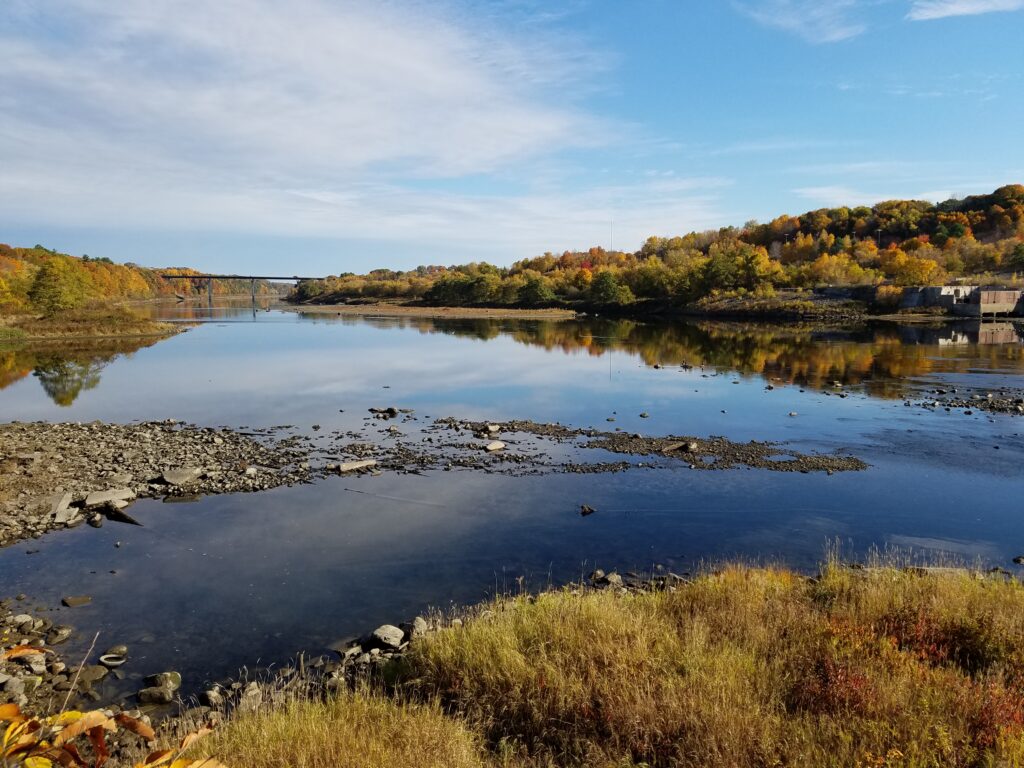
Twenty years ago, the annual run of alewives (a migratory fish essential to the marine food web) up Maine’s Kennebec River was zero. Today, it’s five million — thanks to the removal of Edwards Dam and additional restoration measures upstream. The Kennebec and its web of life have rebounded in many ways since Edwards Dam came down in 1999.
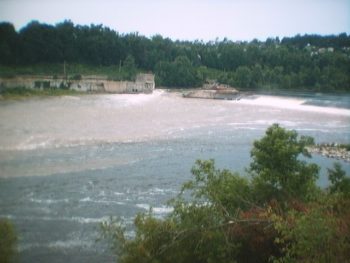
A rush of water surged through Edwards Dam as the Kennebec was freed on July 1, 1999
The removal of Edwards Dam was significant because it was the first time the federal government ordered a dam removed because its costs outweighed its benefits. The restoration of the Kennebec sparked a movement for free-flowing rivers in the U.S. and around the world.
According to the dam removal database maintained by American Rivers, 1,605 dams have been removed in the U.S. since 1912. Most of these (1,199) have occurred since the removal of Edwards Dam in 1999. The year with the most dam removals was 2018 (99 dams removed). 2017 was the second most productive year, with 91 dams removed.
The lesson from the Kennebec after twenty years? Dam removal works. Our partners at the Natural Resources Council of Maine report that since Edwards Dam was removed on July 1, 1999, tens of millions of alewives, blueback herring, striped bass, shad, and other sea-run fish have traveled up the Kennebec River, past the former Edwards Dam, which blocked upstream passage since 1837. Abundant osprey, bald eagles, sturgeon and other wildlife have also returned.
“The precedent setting 1999 Edwards Dam removal continues to surprise us all with the dramatic recovery of the river and its native fish,” said Steve Brooke, who worked for American Rivers in Maine and led the Kennebec Coalition. “Each year the numbers of returning fish grow and document the fact that our rivers can restore themselves given a chance.”
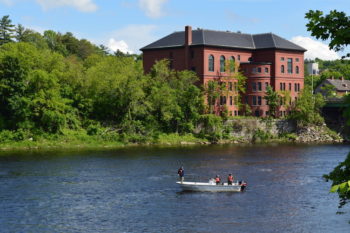
Kennebec River | Photo by Liam McAuliff
On a basic level, dam removals matter for the specific rivers and ecosystems that are restored to health. But looking at the bigger picture, dam removals also matter in terms of our relationship with all rivers – because with every individual act of restoration we’re creating a new and compelling picture of what the future can look like. We’re spotlighting the benefits that healthy, free-flowing rivers can naturally provide. We’re demonstrating the power of local citizens to drive positive change. And we’re proving that communities can reclaim their rivers and their stories.
Here’s a look at some recent river restoration successes – and rivers to watch for the next big opportunities:
Northeast
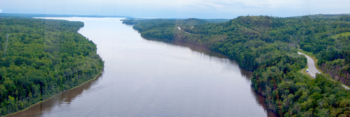
The Penobscot River
Success: Penobscot River (Maine)
On the Penobscot River, removing two dams (Great Works in 2012 and Veazie in 2013) and installing fish passage at others opened nearly 1,000 miles of habitat to migratory fish. Thanks to modifications at other dams in the watershed, hydropower production on the river has remained the same. Learn more
What’s next:
In dam-dense New England, partners are working across hundreds of rivers and dams to reconnect habitat. We are excited about the upcoming removals and potential for new dam removal projects that would hold big wins for migratory fish, including dams on the Ipswich River in Massachusetts, Sheepscot and Presumpscot Rivers in Maine.
Southeast
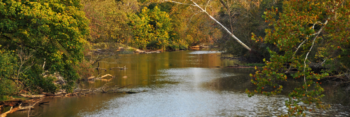
Neuse River | Photo by James Willamor
Success: Neuse River (North Carolina)
Removing Milburnie Dam on Raleigh’s Neuse River in 2017 improved public safety (15 people drowned in the hydraulic created at the abandoned powerhouse) and restored habitat for migratory fish including shad and striped bass. Learn more
What’s next:
This summer American Rivers staff and partners in North Carolina are kicking off a project to remove the Ward’s Mill Dam, which is the #1 ranked dam in the North Carolina barrier prioritization tool. This project will improve public safety, habitat for eastern hellbenders and freshwater mussels and recreation.
American Rivers is also working in the Cullowhee community in North Carolina to remove a deteriorating dam that currently provides the pool where Western Carolina University and the county draw their drinking water. We are working closely with our partners to envision a “run of river” intake that does not rely on a dam to provide drinking water. This project will support a resilient water supply, expanded habitat for endangered species, and create recreation opportunities in a river park.
Mid-Atlantic
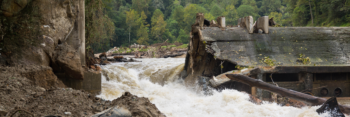
The Patapsco River | Photo by Jim Thompson
Success: Patapsco River (Maryland)
In addition to eliminating a public safety risk, the removal of Bloede Dam will give a tremendous boost to the health of the river ecosystem, including fisheries critical to the food web of the Chesapeake Bay. The removal of Bloede Dam is the linchpin of a decades-long restoration effort that also included the removal of Simkins Dam (2010) and Union Dam (2011). Removal of Bloede restores more than 65 miles of spawning habitat for blueback herring, alewife, American shad, and hickory shad in the watershed, and more than 183 miles for American eel.
What’s next: Potomac River (MD)
The Potomac River Industrial Dam is located on the North Branch of the Potomac River in downtown Cumberland, Maryland. This outdated infrastructure not only blocks 43 miles of habitat for American eel and other aquatic species, it is a barrier to the city’s broader vision for a thriving river-centered recreation economy. With ownership of the structure in question, the project has remained in limbo. Now is the time to refocus on efforts to address this unsafe dam.
Northwest
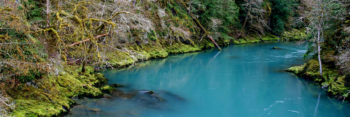
Elwha River | Photo by Lance McCoy
Success: Elwha River (WA)
Removal of Elwha and Glines Canyon dams began in 2011 and was completed in 2014, and since then the entire watershed — from the headwaters in Olympic National Park to the sea – has rebounded back to life. Learn more
What’s next:
Middle Fork Nooksack (Washington)
Removal of the Middle Fork Nooksack Dam near Bellingham will begin in the summer of 2020. The effort will reestablish access to approximately 16 miles of critical spawning and rearing habitat for Puget Sound Endangered Species Act listed chinook salmon, steelhead, and bull trout. The project will also maintain the City of Bellingham’s municipal water supply.
Lower Snake River (Washington)
Removing four dams on the lower Snake River in eastern Washington provides a once in a generation opportunity to recover endangered wild salmon and steelhead runs in the Columbia-Snake watershed (including Idaho’s Salmon and Clearwater rivers, northeast Oregon’s Imnaha and Grande Ronde, and southeast Washington’s Tuccannon), while creating new economic opportunities and investing in a clean energy future.
Midwest
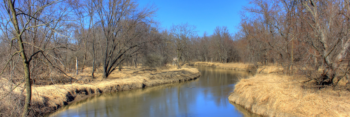
The Baraboo River
Success: Baraboo River (Wisconsin)
Five dams were removed from the Baraboo River, beginning in the 1990’s. Since then recreation has increased and surrounding communities plan to add new opportunities for water recreation and riverside trails. They hope to earn National Water Trail Status with the longest free-flowing (120-miles) and fully-accessible river trail.
What’s next:
Mississippi River (Minnesota)
American Rivers and our partners are calling for removal of two U.S. Army Corps of Engineers locks and dams on the Mississippi River in Minneapolis. Restoring a free-flowing river in the Mississippi Gorge would create new recreation and economic opportunities, improve fish and wildlife habitat and allow the Twin Cities to reconnect with a revitalized river.
Kinnickinnic River (Wisconsin)
Removing two aging dams on the Kinnickinnic River in River Falls would revitalize and restore the Lower Kinni’s cold water habitat, resurrect an entire mile of this world class stream, and fully restore the historic Junction Falls waterfall in the heart of the city. Learn more
California
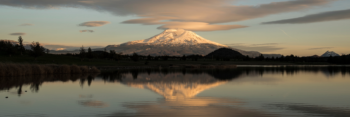
Klamath River | Photo by Daniel Nylen
Success: Holy Jim Creek, San Juan Creek, and Trabuco Creek
The Cleveland National Forest removed 33 dams in total—18 dams from Holy Jim Creek, four in upper San Juan Creek, 10 in lower San Juan Creek and one from Trabuco Creek—in 2018. The dams were originally constructed for varying uses; however, years of disuse and, in some instances, a 40-year maintenance backlog resulted in the decision to remove these structures as a way to restore these streams and provide access to habitat for fish and wildlife. The efforts of the Cleveland National Forest demonstrate the power of coupling smart management of outdated water infrastructure with the potential re-establishment of extirpated species like the southern California steelhead trout.
Klamath River (Oregon, California)
Removing four dams on the Klamath River – slated to begin in 2021 — will restore more than 300 miles of salmon habitat for salmon, and improve water quality. Learn more
Want to keep up to date about river restoration successes? Sign up and we’ll share news and alerts.




10 responses to “Twenty years of dam removal successes – and what’s up next”
if it was not for the crooked corrupt federal govt in canada the site c dam project in bc would never have got to first base–as all rivers in canada are under federal jurisdiction the federal had to issue federal permits for the site c dam to get to first base-thats where the crooked corruption started as the corporations running the site c dam project in bc had a shoo-in with the crooked corrupt govt well knowing that the feds would sign off the much needed permits and the crooked corrupt bc govt of the day happliy followed suit—one has to wounder whos pockets have been lined to allow this to happen–follow the money—mark meiers-charlie lk bc
May The Snake River Dams be Top Priority . You should know that there is a Petition on Change.org with over 250 Thousand Signatures requesting Gov Inslee and The Army Corp to Breach Now. There is so much at stake with the continuing decline in wild salmon. Quite sure the drought this summer added additional stressors of what remains of the salmon. Once a thriving river basin for Salmon …. May we witness their return! Thanks for all your Work ! Enjoyed reading this once again!
Those four dams on the Snake River in Idaho are protected by bought-off politicians. It will take some doing, to remove those dams.
Thank you so much for continuing to advocate for removal of the Lower Snake River dams. The cost of dam removal is much less than the benefit of opening up many miles of salmon spawning habitat, at northern latitudes were water temperatures are less likely to be adversely affected by global warming.
Before reading the above-listed dam removals I had no idea of the progress this group has made in letting the waters again run free. Wonderful news! It makes me feel like a newborn alewife, free again to run those rivers along with my million or so friends!
I would like to know why these rivers were damned up to begin with.Please enlighten me and keep up the good work!
NOTHING about the Southwest? That’s dark.
The restoration of the Kennebec is a social and conservation triumph, a boost to a historic community.
The real challenge comes with the removal of the needless real estate dams on the rivers of the South — useless, fraudulent, bogus assertions of public need by Corps of Engineers and power companies.
The Santee, for example, second largest Atlantic river in US after Susquehanna, was completely destroyed, rerouted, renamed so some politicians could get credit for federal dollars. Over 1 million acres drowned on 5 major southern rivers for no plausible gain… except the creation of inland waterfront real estate. Those were living rivers with vibrant fisheries, home to vast swamp forests, social histories. Those dams need to go peaceably before nature takes them out violently along with everything downstream.
Please add social media buttons to your website so readers can share your great articles on Twitter, Pinterest, Facebook, etc. Thanks!
Great inspiration for Dam Removal in Europe!!!
We should connect the dots, learn from eachother and scaling dam removal in Europe too!
Now that the dams are getting old and obsolete it’s time to get the river flowing again.